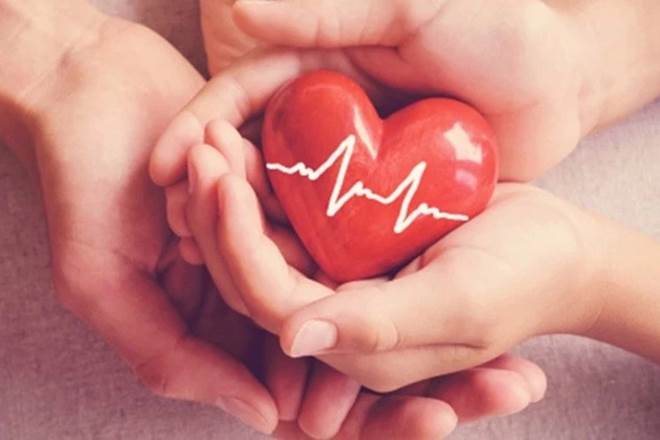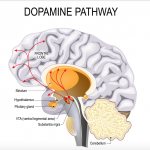The human heart beats over 100,000 times per day and is known to pump 2,000 gallons of blood each day.How does blood travel through the heart?
With every heartbeat, the blood travels through what is a system of blood vessels – or elastic-like tubes – called the circulatory system.[1]
The blood transfers oxygen from the lungs to the heart as well as all nutrients to the body tissues. It is also responsible for removing toxins and waste away from the tissues.[2]

Types of Blood Vessels
Arteries:
These emerge from the aorta, the largest artery of the heart. The arteries are responsible for carrying oxygen-rich blood from the heart to other body parts. Aorta leaves the heart and transforms itself into different branches, thereby reducing in size as they move farther from the heart and reach closer to the target organ.[3]
Veins:
Veins carry impure blood back to the heart. This denotes blood devoid of oxygen and rich in waste products that need to be removed from the body. Unlike arteries, veins tend to become more significant as they come close to the heart.[4]
Here is a look at how they work.
The inferior vena cava, for one, carries blood from the abdomen and legs (mostly lower parts of the body) to the heart.
The superior vena cava has a different purpose. It carries blood mostly from upper parts of the body like head and arms to the heart.
This system of blood vessels – with the arteries, veins and capillaries – is over 60,000 miles long! It is a continuous process, and blood tends to flow across the body; it is the heart that makes such a complicated process appear easy.[5]
Where is the heart, and how does it look?
Many think that our hearts lie on the left side of the body. But do they? Not really.
Our heart is protected by the rib cage and is located between the lungs and somewhat closer to the breastbone’s left side. Hence, it can be determined that the heart is a bit tilted towards the left side – but it’s not completely on the left side.[6]
There is a very rare condition that makes the heart tilted to the right side and not left.
The heart is made up of muscles, and this is evident from the exterior appearance. The muscular walls expand and contract to pump out the blood. As suggested earlier, the heart’s major blood vessels include superior vena cava as well as the inferior vena cava, and aorta. The pulmonary artery and pulmonary veins have an important role too.
- The pulmonary artery makes deoxygenated oxygen travel to the lungs to get it oxygenated
- The pulmonary veins, on the other hand, bring the oxygenated blood back to the heart.
- The coronary arteries are further responsible for supplying blood to the heart’s muscular walls and not heart directly.
The heart is more of a hollow organ with divisions of only four chambers, two top chambers known as atria, and two low chambers known as ventricles. Atria and ventricles work in close collaboration with each other to contract and relax the heart while pumping blood.[7]
The blood flows out of these chambers using the four significant valves known as:
- Tricuspid valve
- Mitral valve
- Pulmonary valve
- Aortic valve
The valves of our heart work in the same way we have seen the valves of plumbing machines. The valves help the blood flow in the right direction. The annulus is responsible for maintaining the shape of valves.[8]
What are the coronary arteries?
The heart is made up of tissues and needs a constant supply of nutrients and oxygen for proper functioning. The chambers are loaded with the blood, but the heart is often devoid of nourishment. Thus, the coronary arteries are responsible for supplying oxygen-rich blood and nutrients to the heart.
Right coronary artery:
The artery is responsible for making blood travel to the right atrium and ventricle. You will see the right coronary artery branching out to the posterior descending artery, and has a role in supplying blood to the bottom portion of the left ventricle and back of the septum with blood.
Left coronary artery:
The artery, with a role to supply blood to the left atrium, moves blood to the circumflex artery and left anterior descending artery. The branches of arteries and arteries supply all the heart muscles with sufficient blood.[9]
Understanding the Heart’s Beat
The heart beats with a lub dub sound, with the impulse starting in the right atrium, in specialized cells called the SA node, a reason we call it the body’s natural pacemaker. This electrical activity causes the atria to contract.[10]
The atria and ventricles collaborate in a contraction and relaxation manner to make the heartbeat and pump out the blood. This makes the heart the main source of your body to offer power.
The heartbeat acts like electric impulses to make your body function properly.
At rest, the heart beats for 50-99 times a minute. Having a fever or rigorous activities such as emotions, exercise, and medicines can make your heartbeat faster up to 100 times per minute.
How does blood flow through the heart?
The left and right sides of the heart work together to pump blood. It is a continuous process allowing blood to flow across the heart, body, and lungs.
Double circulation is one of the major processes that allows blood to pass twice through the heart for completing one cycle.[11]
What about the Lungs?
After the blood goes through the pulmonic valve, it enters the lungs, which we know as the pulmonary circulation. It is from the pulmonic valve that the blood travels to the tiny capillary vessels present in the lungs.[12]
On the other hand, carbon dioxide, present in the blood, now attaches to the air sacs. It’s how you exhale the carbon dioxide from the body.[13]
[1] https://www.ncbi.nlm.nih.gov/pmc/articles/PMC6023278/
[2] Borelli G.A. History of Cardiology. Medical Life Press; New York, NY, USA: 1927. [Google Scholar]
[3] Stedman T.L. Stedman’s Medical Dictionary. 28th ed. Wolters Kluwer Health; Philadelphia, PA, USA: 2005. [Google Scholar]
[4] Pasipoularides A. Heart’s Vortex: Intracardiac Blood Flow Phenomena. 1st ed. People’s Medical Publishing House; Beijing, China: 2009. [Google Scholar]
[5] https://www.ncbi.nlm.nih.gov/books/NBK470256/
[6] https://www.ncbi.nlm.nih.gov/pmc/articles/PMC1571338/
[7] Rosenbaum M.B., Elizari M.V., Kretz A., Taratuto A.L. Anatomical basis of AV conduction disturbances. Geriatrics. 1970;25:132–144. [PubMed] [Google Scholar]
[8] https://www.ncbi.nlm.nih.gov/pmc/articles/PMC6849845/
[9] Torrent-Guasp F. El Cicio Cardiaco. Espasa-Calpe; Madrid, Spain: 1954. [Google Scholar]
[10] https://www.ncbi.nlm.nih.gov/books/NBK545195/
[11] Brecher G.A. Experimental evidence of ventricular diastolic suction. Circ. Res. 1956;4:513–518. doi: 10.1161/01.RES.4.5.513. [PubMed] [CrossRef]
[12] Wiggers C.J. Studies on the consecutive phases of the cardiac cycle. Am. J. Physiol. 1921;56:415–459. [Google Scholar]

